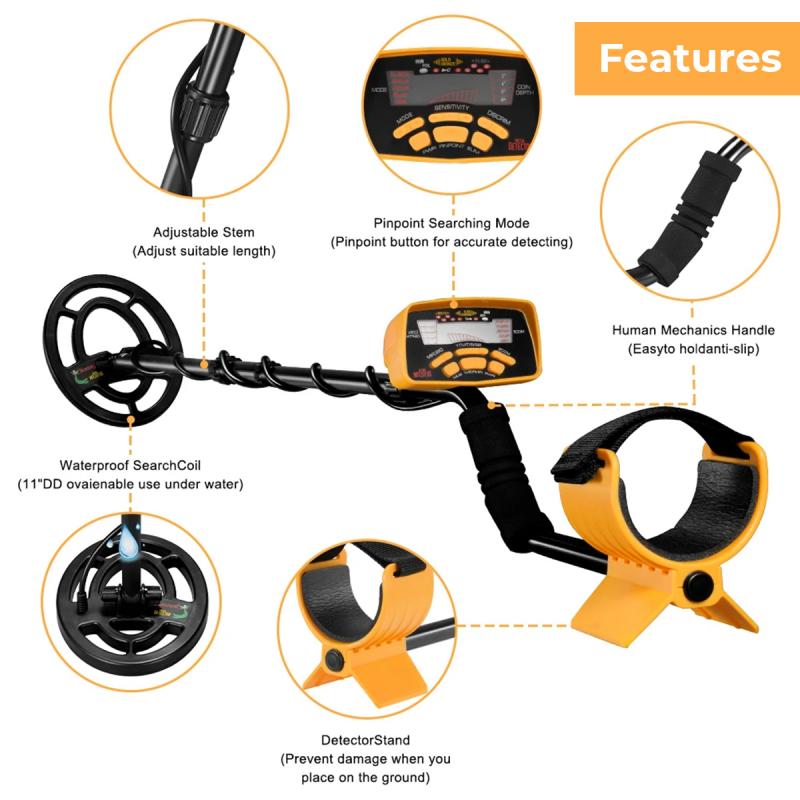How Deep Can A Metal Detector Detect?
Metal detectors are fascinating devices that have captured the interest of hobbyists, treasure hunters, and professionals alike. One of the most common questions asked by those new to metal detecting is, "How deep can a metal detector detect?" The answer to this question is not straightforward, as it depends on a variety of factors including the type of metal detector, the size and type of the object being detected, the soil conditions, and the settings of the detector itself. In this article, we will delve into these factors to provide a comprehensive understanding of the depth capabilities of metal detectors.
Types of Metal Detectors

There are several types of metal detectors, each designed for specific purposes and with varying depth capabilities. The most common types include:
1. VLF (Very Low Frequency) Detectors: These are the most common type of metal detectors and are often used by hobbyists. They are effective for detecting coins, jewelry, and relics. VLF detectors typically have a detection depth of up to 12 inches for small objects like coins.
2. PI (Pulse Induction) Detectors: These detectors are often used in areas with high mineralization, such as beaches and saltwater environments. PI detectors can detect objects at greater depths than VLF detectors, often up to 18 inches or more for small objects.
3. Multi-Frequency Detectors: These detectors use multiple frequencies simultaneously to provide better depth and discrimination capabilities. They are versatile and can be used in a variety of environments. The detection depth for multi-frequency detectors can range from 12 to 18 inches for small objects.
4. Gold Detectors: Specifically designed to find gold nuggets, these detectors can detect gold at depths of up to 24 inches or more, depending on the size of the nugget and the soil conditions.
Factors Affecting Detection Depth

Several factors can influence the depth at which a metal detector can detect an object. Understanding these factors can help you optimize your metal detecting experience.
1. Size and Type of Object: Larger objects can be detected at greater depths than smaller objects. For example, a large metal box can be detected several feet underground, while a small coin may only be detectable at a few inches. Additionally, different metals have varying conductivity, which can affect detection depth. For instance, gold and silver are more conductive and can be detected at greater depths than iron or aluminum.
2. Soil Conditions: The type of soil and its mineral content can significantly impact detection depth. Highly mineralized soils, such as those found in volcanic areas, can interfere with the detector's signals and reduce detection depth. Conversely, sandy or loamy soils with low mineral content allow for greater detection depths.
3. Detector Settings: The settings on your metal detector, such as sensitivity and discrimination, can also affect detection depth. Higher sensitivity settings can increase detection depth but may also result in more false signals. Discrimination settings allow you to filter out unwanted metals, but using too much discrimination can reduce detection depth.
4. Ground Balance: Ground balance is a feature that allows the detector to ignore the mineral content in the soil and focus on detecting metal objects. Properly adjusting the ground balance can improve detection depth, especially in highly mineralized soils.
5. Coil Size and Type: The size and type of the search coil on your metal detector can also influence detection depth. Larger coils can detect objects at greater depths but may be less effective at pinpointing small objects. Smaller coils are better for detecting small objects but have a shallower detection depth. Additionally, some coils are designed for specific purposes, such as detecting gold or relics, and may offer better performance in those areas.
Practical Tips for Maximizing Detection Depth

To get the most out of your metal detector and maximize detection depth, consider the following practical tips:
1. Choose the Right Detector: Select a metal detector that is suited to your specific needs and the type of objects you are searching for. For example, if you are searching for gold nuggets, a gold detector will provide better depth and sensitivity than a general-purpose detector.
2. Adjust Settings Appropriately: Experiment with the sensitivity and discrimination settings on your detector to find the optimal balance between depth and accuracy. In general, higher sensitivity settings will increase detection depth, but be prepared to deal with more false signals.
3. Proper Ground Balance: Take the time to properly adjust the ground balance on your detector, especially if you are detecting in areas with high mineralization. This will help you achieve greater detection depths and reduce interference from the soil.
4. Use the Right Coil: Consider using a larger coil if you are searching for larger objects at greater depths. However, if you are searching for small objects like coins or jewelry, a smaller coil may be more effective.
5. Search in Optimal Conditions: Soil moisture can affect detection depth, with slightly damp soil often providing better conductivity and greater depth. Avoid searching in extremely dry or waterlogged conditions, as these can reduce detection depth.
6. Practice and Patience: Metal detecting is a skill that improves with practice. Spend time learning how to interpret the signals from your detector and be patient. The more you use your detector, the better you will become at identifying and locating objects at greater depths.
The depth at which a metal detector can detect objects is influenced by a variety of factors, including the type of detector, the size and type of the object, soil conditions, and detector settings. By understanding these factors and following practical tips, you can maximize the detection depth of your metal detector and increase your chances of finding valuable objects. Whether you are a hobbyist searching for coins and jewelry or a professional looking for relics and gold, the right equipment and techniques can make all the difference in your metal detecting success.
